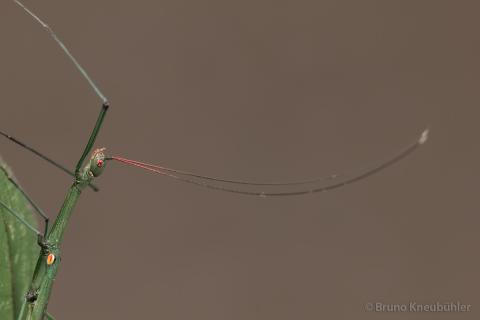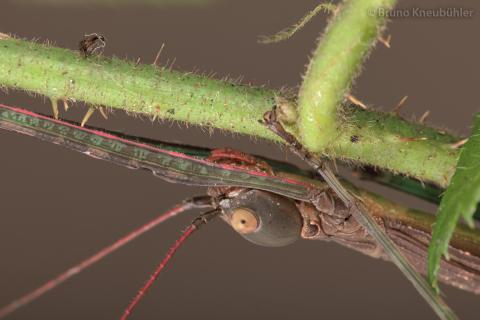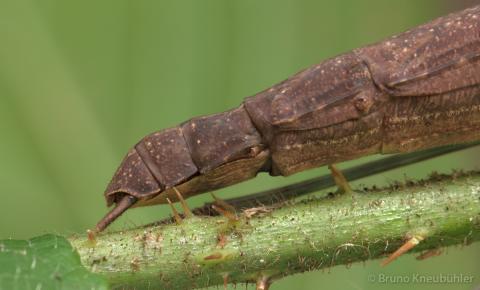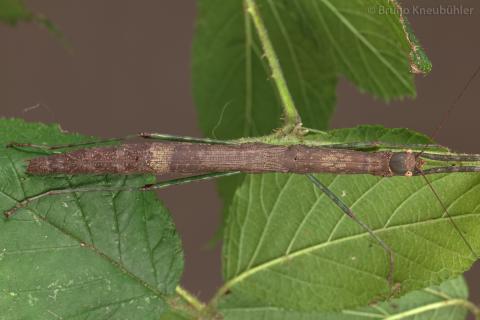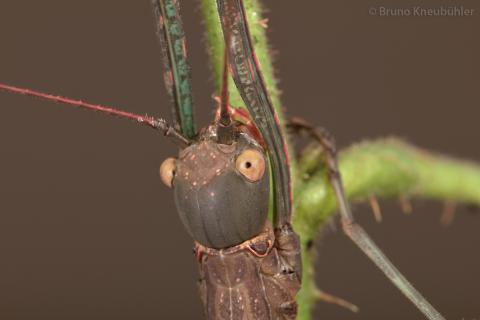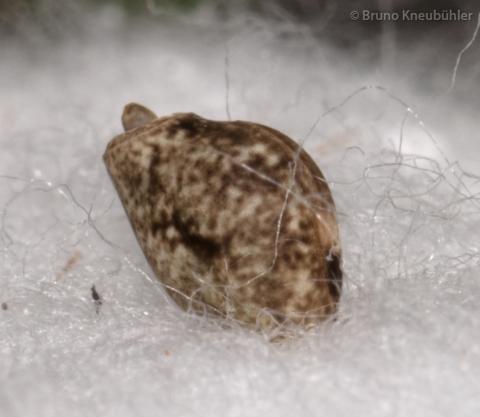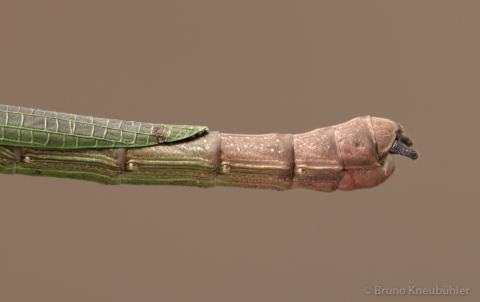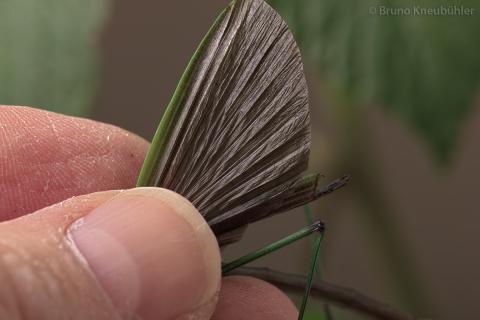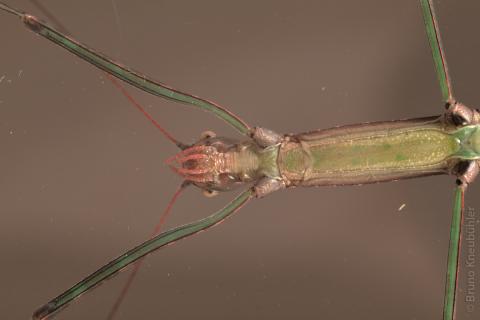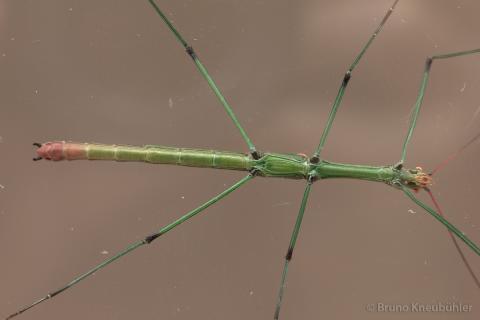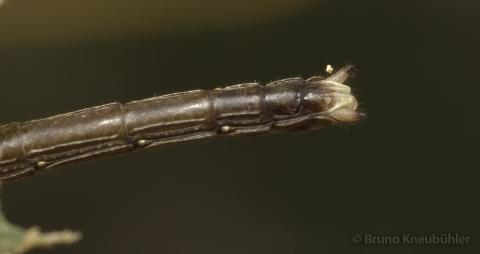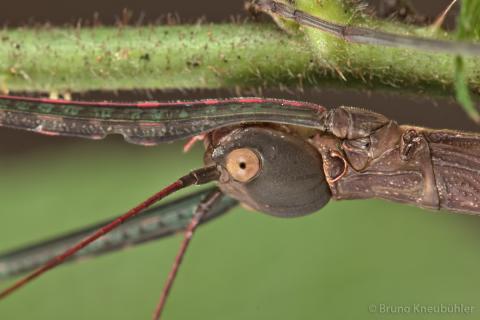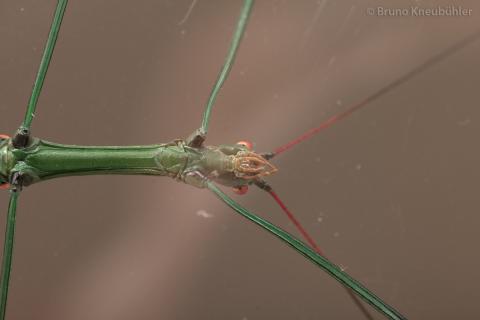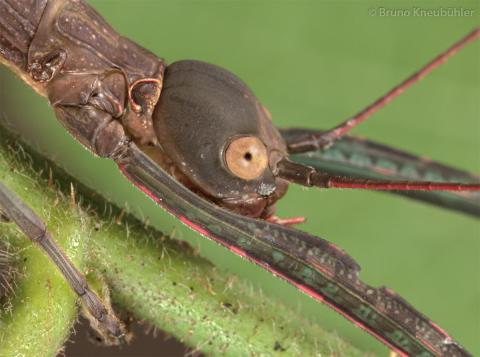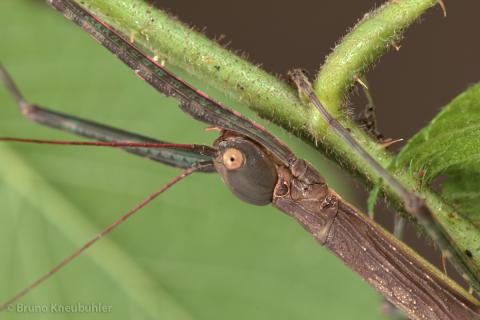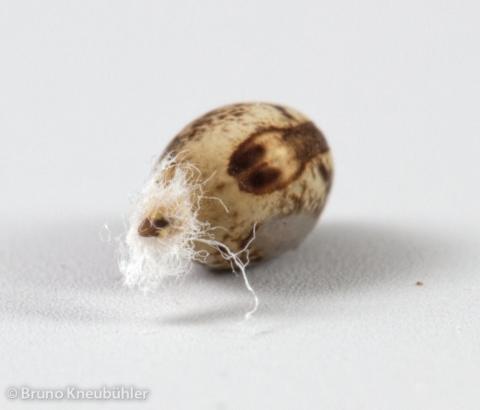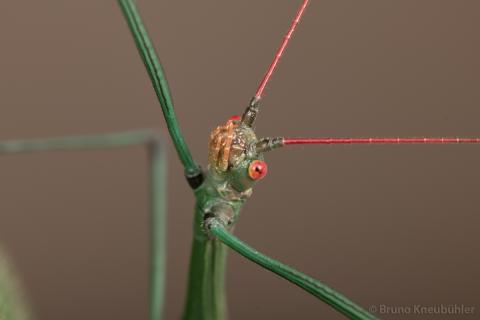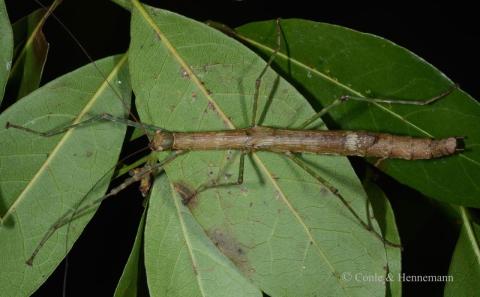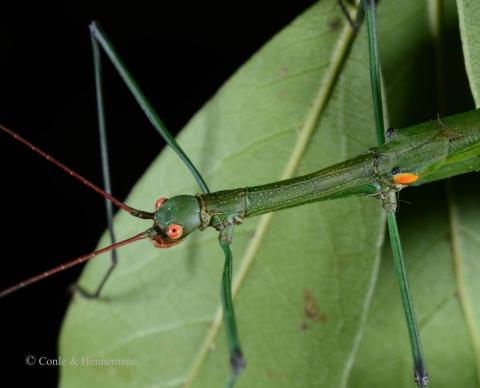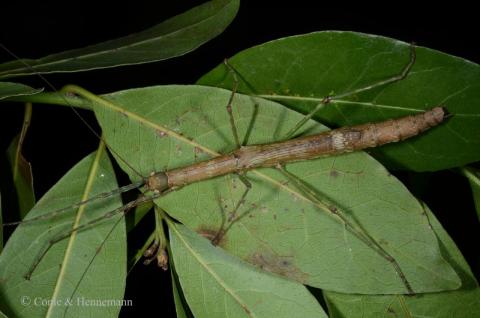
Genus
Species
Stock
CLP
559
Culture status
Probably lost
Foodplants
Salal (Gaultheria shallon)
Breeding notes
(by Bruno Kneubuehler)
General Notes
- 2011 – taxonomical aspects of this species are being examined
by Joachim Bresseel (Belgium), and he will also describe
this new species - 2012 – first results (J. Bresseel, pers. comm.) show, that this
species is closely related to the genus Marmessoides
(as well as to Asceles). But seems that it belongs to a new
genus (together with some species, which are already
in culture as „Asceles“ - like Asceles cf glaber "Ban Salok") - 2012 - first successful culture by Bruno Kneubuehler
- 2012 - this species has been distributed under the preliminary
name Marmessoidea sp. „Bach Ma“
_________________
Origin
- Bach Ma, Vietnam
_________________
Females
- inconspicuous, typical phasmids
- about 7.5 – 8 cm long
- body dorsally mottled in different brown shades
- body ventrally greenish-brown
- mouth reddish
- legs green-brown
- legs with red, fine lines
- antennae longer than forelegs
- first half (proximal) half of antennae reddish, the rest is dark
- eyes light brown
- wings about half as long as the abdomen
- membranous part of hindwings dark brown with discreet tesselate patterning
- rather long, thin cerci
_________________
Males
- slender males
- about 6 – 6.5 cm long
- body and legs mainly green
- abdominal ending brown
- coaxe (leg joints) and knees black
- eyes red
- yellow dot on the forewings (tegminae), which is framed white-black on the upper side
- antennae longer than the forelegs
- first part of antennae (proximal) red, rest is dark with a white section towards the end
- wings are well developed
- membranous part of hindwings (alae) dark brown
- distinct, black cerci
_________________
Nymphs
- about 16 mm long (L1)
- dark brown (L1)
- antennae longer than forelegs (L1)
- antennae with white section at the tip
- by L4 it is quite easy to draw a distinction between ♀♂ (by the naked eye)
_________________
Eggs
- long spine at the posterior pole
- about 4.5 x 2 mm (including spine)
- matt
- elongate-oval
- distinct capitulum on egg lid (operculum)
- micropylar plate elongate
_________________
Food Plants
- Salal (Gaultheria shallon) with Laurel-Coating
- this Coating-Method is an easy method – for serious breeders. With this method, the death rate amongst nymphs is rather low. And by L3, nymphs will also accept Salal without coating
- use organic laurel leaves to make laurel powder - to be shure that they are not poisoned with pesticides
- maybe nymphs of later generations will also accept Salal without coating, as it happened with Marmessoidea rosea
_________________
Behaviour
- an rather active species – nymphs as well as adults are active during the day occasionally
- main activity is during the night
- nymphs and adults let themsevles fall when feeling threatened
- males can fly well
- females have not been observed flying
- matings are rather frequent (at night), and couples stay together for some hours at the most
- at least the adults have a defensive stray
- females stick their eggs into soft substrate (also on the cage floor), as well as leaves
- one can offer the females (synthetic) sponges, hanged to the sides of the cage (see photos on the right). Females will then stick their eggs into the sponges, and it is easy to remove the eggs
_________________
Developement
- eggs can be incubated while still sticking in the substrate
- if eggs are carefully removed, then they can also successfully incubated on another substrate
- incubation time (HH-incubation on slightly damp sand at 20 - 23 °C) is short, only about 5 – 6 weeks (F1, F2)
- it is important to spread some dried (!) moss over the (detached) eggs - this will make it much easier for the nymphs to hatch unscathed and it also reduces mould growth to some extend
- hatching ratio in F1 was very high (> 50%)
- males will be adult after about 2.5 months (at 20 – 23°C), females after about 3 months
- females start laying eggs after about 2 – 3 weeks
- eggs are stuck into substrate
- about 15 – 20 eggs per female and week
- adults can live for several months
_________________
Breeding Notes
- my general notes on how to breed phasmids are a integral part of this care sheet ...
- it is very easy to breed this species
- keep the nymphs in a cage with good ventilation, but take care that the humidity does not drop too low
- a constantly wet paper towel on the floor of the cage helps raising humidity
- a humidity level of about 60+ % rH (for adults) and 75+ % rH (for nymphs) seems to be fine
- nymphs can be kept in a Faunabox (or similar cages like Faunarium)
- move nymphs to a bigger cage as they grow bigger
- a cage of at least 30 x 30 x 30 cm should be provided for about 3 adult couples of this species (or considerably larger if the cage also contains other species !)
- generally I advise to keep different phasmid species seperately (unfortunately, overcrowed cages are still too common ...)
- I have never sprayed nymphs, adults or their cage with water
- make shure that nymphs, which are about to undergo their adult moult, do not find places in the cage which would not offer them enough space beneath to moult successfully. If needed put the jar with the food plants on a raised platform




